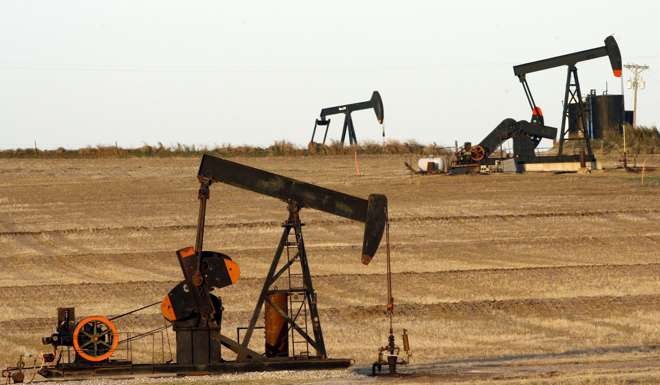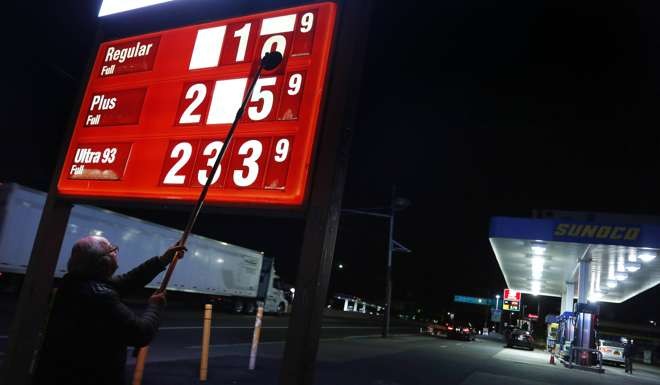
Oil prices jump as Saudis eye deeper output cuts
Oil jumped to the highest since July 2015 after Saudi Arabia signalled it’s ready to cut output more than earlier agreed and non-OPEC countries including Russia pledged to pump less next year.
Futures rose as much as 5.8 per cent in New York and 6.6 per cent in London.
Saudi Energy Minister Khalid Al-Falih said Saturday the biggest crude exporter will “cut substantially to be below” the target agreed on last month with members of OPEC. His comments followed a deal by 11 non-OPEC countries to join forces with the group and trim output by 558,000 barrels a day next year, the first pact between the rivals in 15 years.
US oil futures have gained almost 20 per cent since the Organization of Petroleum Exporting Countries agreed on November 30 to cut output for the first time in eight years. Saudi Arabia, which initiated OPEC’s decision in 2014 to pump without limits, is leading efforts to take back control of the market. The OPEC and non-OPEC plan encompasses countries that supply 60 per cent of the world’s crude, but excludes major producers such as the US, China, Canada and Brazil.

“The non-OPEC cut was expected but nobody foresaw the Saudi statement,” Bob Yawger, director of the futures division at Mizuho Securities USA Inc. in New York, said by telephone. “The market’s giving bonus points because the Saudis are willing to do whatever has to be done to balance the market. We wouldn’t be up anywhere near as much on the agreement alone.”
West Texas Intermediate for January delivery rose US$2.17, or 4.2 per cent, to $53.67 a barrel at 9:52 am on the New York Mercantile Exchange. Futures touched $54.51, the highest level since July 6, 2015. Total volume traded was more than double the 100-day average.
Brent for February settlement climbed $2.14, or 3.9 per cent, to $56.47 a barrel on the London-based ICE Futures Europe exchange. The contract reached $57.89, the highest since July 16, 2015. The global benchmark crude traded at a $1.82 premium to February WTI.
“The main impact of the non-OPEC collaboration is to pull the global market into balance, if not in deficit, in the second quarter of 2017, rather than in the third quarter,” said Sarah Emerson, managing director of ESAI Energy in Wakefield, Massachusetts. “On an annual average basis, this pushed the global balance into a 200,000 to 300,000 barrel-a-day deficit for the year.”
Oil and gas companies led gains in the US and Europe. Africa-focused explorer Tullow Oil Plc advanced as much as 11 per cent and Italian oil major Eni SpA added as much as 4.6 per cent.
“I can tell you with absolute certainty that effective January 1 we’re going to cut and cut substantially, to be below the level that we have committed to on November 30,” Al-Falih said Saturday in Vienna. The Saudi minister added that the country was ready to take production below 10 million barrels a day, a level it has sustained since March 2015.
Al-Falih and his Russian counterpart Alexander Novak also revealed Saturday that they have been working for nearly a year on the agreement, meeting multiple times in secret. OPEC two weeks ago agreed to reduce its own production by 1.2 million barrels a day, and Saudi Arabia has long insisted that any cuts by the group be accompanied by action from other suppliers.

US explorers rushed back to the shale patch with the largest weekly addition of oil rigs since July 2015, according to Baker Hughes Inc.
The ideal price for oil is about $60 a barrel, because any higher would unleash a surfeit of shale production, Nigerian Minister of State for Petroleum Emmanuel Kachikwu said in a Bloomberg TV interview.
OPEC output rose last month to 33.787 million barrels a day on increases from Libya, Nigeria and Angola, according to independent estimates known as secondary sources, said a person familiar with the data.

